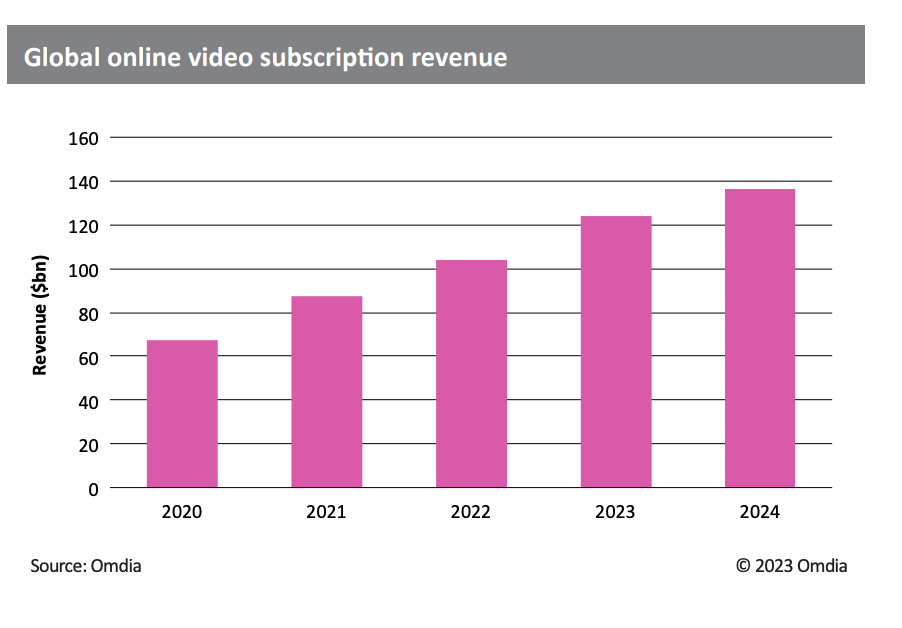DTVE Data Weekly: The P2F movement

Source: Omdia
The past decade for the TV and video segment has been characterized by cord-cutting, which has led to large numbers of traditional payTV subscribers churning to paid-for online video services. While Omdia expects this trend to continue in 2024, we will also see a new stage of market evolution this year, with users moving from paid to free online video.
Various factors will combine to drive this pay-to-free (P2F) trend. The clampdown on password sharing by services such as Netflix, for example, has initially acted to create a subscription surge. But this segment of reluctant subscribers will be vulnerable to P2F churn in 2024, particularly as the full impact of industry strikes and reduced content budgets starts to have a noticeable effect on content quality, making online video services a less compelling subscription option for wavering consumers.
The move toward advertising tiers will also drive the P2F trend. Omdia promotes the wisdom of paid-for streamers offering advertising options to maximize their revenue. But ad loads must be managed with some subtlety so the viewing experience is not significantly impacted. This is relevant for all players, but particularly for Netflix, which was, for so long, strongly associated with being free of advertisements. By removing this attractive selling point, Netflix loses something in its positioning, becoming perceived more as one of a pack of services offering something similar rather than being the recognized leader.
Streaming strategies
The online video pioneers of Netflix and Amazon Prime Video dominated the sector for several years before a series of next-generation services from legacy media companies, including Disney+, HBO Max, and Paramount+, decided to enter the fray. Online video’s success was built on substantial content investment combined with low subscription prices, and the result was the creation of huge subscriber bases for its participants. But that model could not be sustained in the long term, and the streaming video business has shifted its focus to making itself profitable. As a result, services are now, in general, cutting content budgets while moving away from exclusivity, so additional revenue can be generated from licensing deals. Plus, the major online video services have been imposing significant price increases.
Predictions
Despite these potentially inhibiting factors, Omdia anticipates sufficient care will be taken in implementing advertising options and price increases, so we still forecast solid growth for paid online video in 2024. The movement from pay to free will happen, but there will still be room for paid services to continue to flourish. The balancing act will be precarious, meaning a suboptimal execution of strategy could threaten growth. So, the danger remains that the industry will create a perfect storm for itself.
Industry strikes and slashed content budgets will undoubtedly affect the volume and quality of content, while the addition of advertising will somewhat negatively affect the viewing experience of a customer base accustomed to no adverts. The ongoing cost-of-living crisis will hit discretionary income, and the attractiveness of free video from FAST and AVOD is growing as a viable alternative that many may start to see as not altogether different from the paid-for services. This all makes paid online video subscriber bases more vulnerable to churn. The industry has already created one disaffected customer base through its implementation of traditional pay TV, so it must handle these issues very carefully to ensure it does not repeat the same mistake with the online video customer base.
Adam Thomas is Omdia’s senior principal analyst, TV & Video
